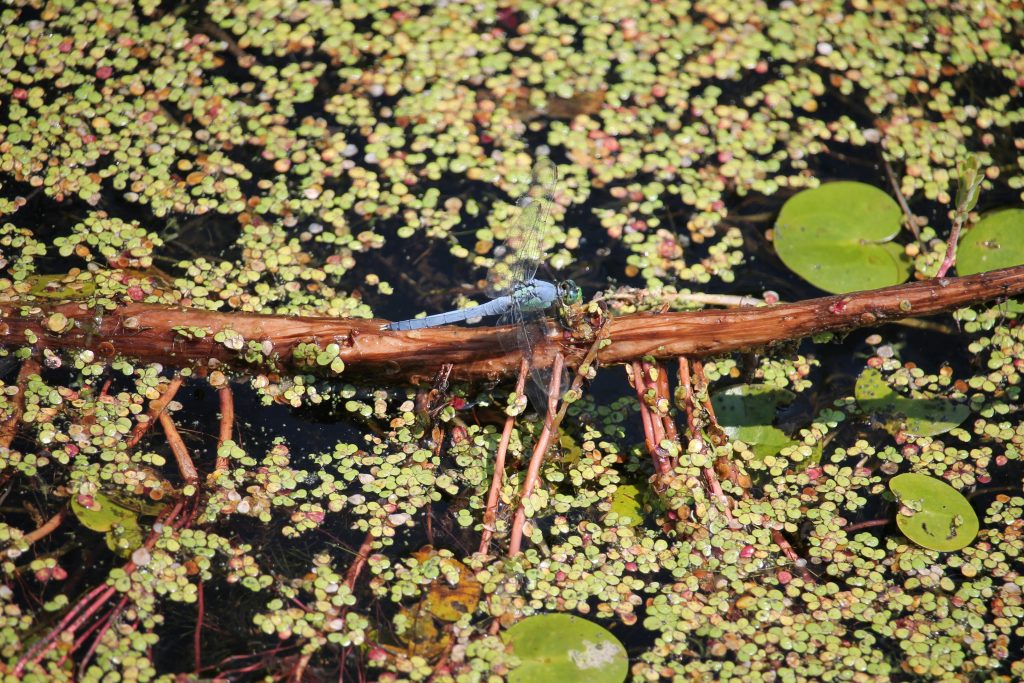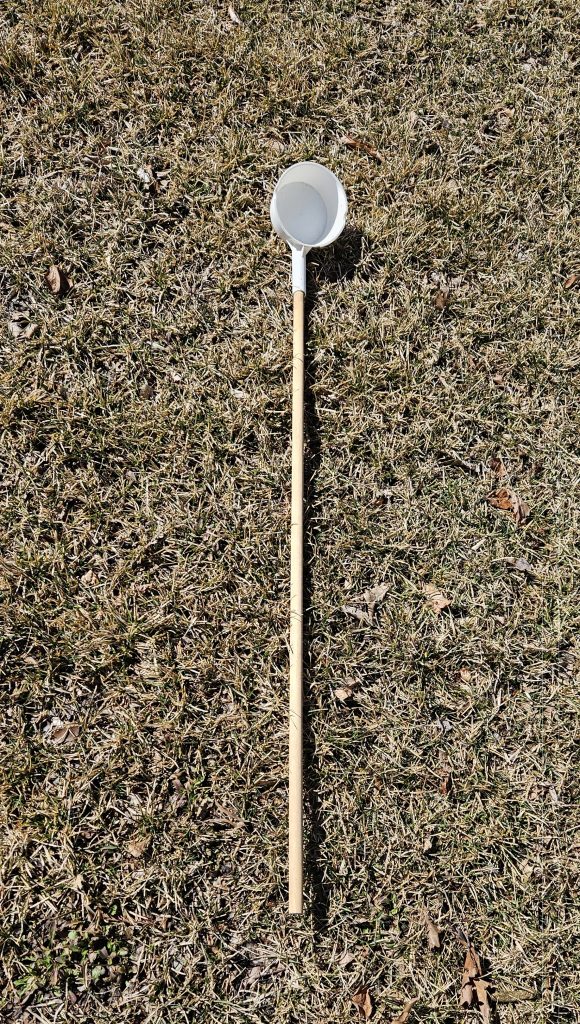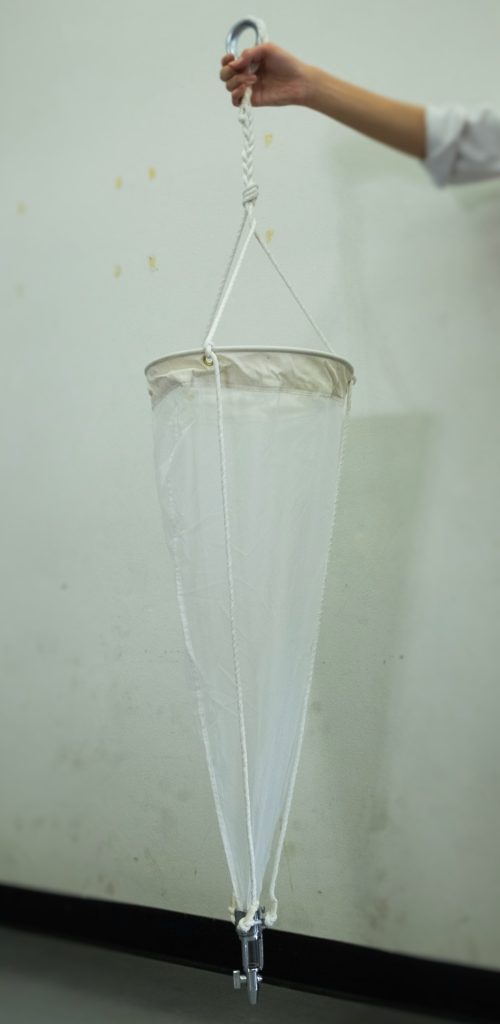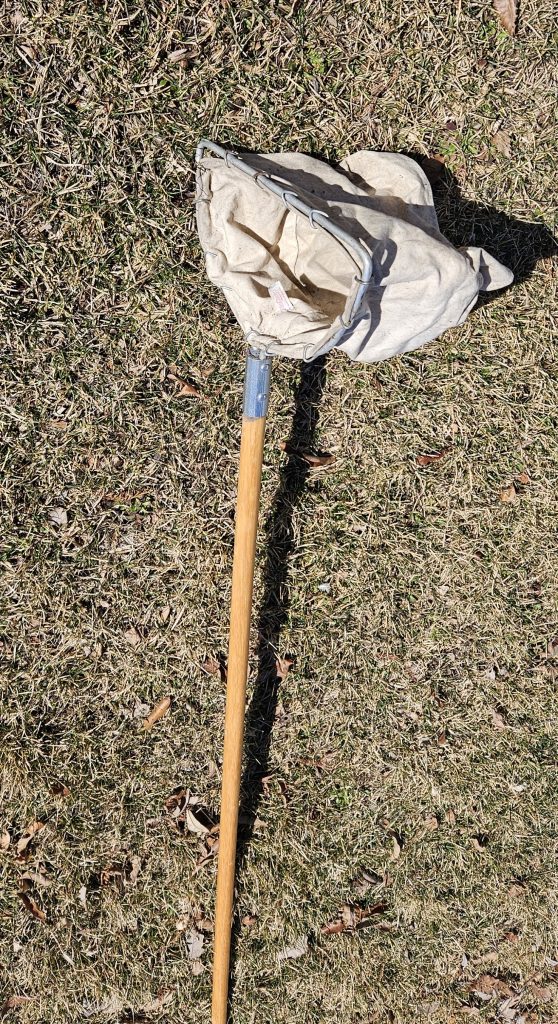Lab 6: Ecosystems of Freshwater Ponds and Wetlands

Introduction
The freshwater environment is home to many organisms, including a wide array of plankton (very small floating organisms) and invertebrate animals (animals without backbones). Plankton form the basis of aquatic food chains, starting with the photosynthetic phytoplankton. They are consumed by zooplankton, who in turn are consumed by invertebrates and small fish.
Numerous invertebrates are found in the substrate at the bottom (benthos) of a wetland, pond, or stream. Some are consumers of bacteria and algae, others feed on detritus, and some are small but formidable predators. Many represent the young stages of an insect’s life cycle (Figure 6.1). Given their diversity and various ecological roles, the composition of a benthic macroinvertebrate community serves as a good indicator of environmental quality. Certain species are sensitive to the amount of dissolved oxygen present, which may vary seasonally and because of pollution.
Lab Objectives
In this lab, you will:
- Learn about the species composition of local freshwater ponds and wetlands.
- Identify planktonic organisms through use of a light microscope and identification guides.
- Identify macroscopic benthic macroinvertebrates in local freshwater habitats.
- Relate habitat and microhabitat differences to the abundance and composition of freshwater aquatic organisms.
- Understand the impacts of human activities on the release of pollutants into aquatic ecosystems.
This lab is divided into parts that may be completed on different days.
Part 1: The Plankton Community
Materials
- Plankton tow nets
- Plastic dip cups, ca. 250 ml, attached to extended handles
- 50 ml plastic jars with screw-top lids
- Dissecting microscope
- Petri dishes
- Compound light microscope
- Small droppers or pipettes
- Glass slides and coverslips
- Online resources or books to identify regional freshwater plankton

Lab Directions

- Working with a group of classmates, collect water samples from at least two campus or local ponds and wetlands.
- If available, use a plankton tow net (Figure 6.2). This net concentrates plankton in a cup or collecting vial at the end of the net. Ensure that a strong string or rope is attached to the ring at the open end to allow you to toss your net into the water, pull it through the water, and retrieve it. Take care not to drag the net along the bottom of the pond or wetland. Alternatively, use cups on extended handles to dip into the water (Figure 6.3).
- Place water collected from the bottom of the plankton net or from the collecting cup into plastic jars with screw–top lids secured and carry these immediately back to the laboratory for observation and analysis. (If the samples are to sit in the laboratory for a day or two before observation, loosen the lids to help with oxygen exchange at the water surface.)
- Option A. Observe your sample under the dissecting microscope. Pour water from a sampling jar into half of a petri dish (either the bottom or top), filling the dish halfway, and place for observation under the dissecting scope. Repeat for the other half of the petri dish. Observe the contents of each petri dish.
Option B. Observe your samples under the compound light microscope. Make three wet mounts. For each wet mount, place 1-2 drops of water from a sample on a glass slide. Place the coverslip at a 45-degree angle along the water drop, then lower—this technique reduces the amount of trapped air bubbles compared to dropping the coverslip straight onto the water drop on the slide. Observe the contents of each slide at 100X magnification. - Use local and regional guides for identifying phytoplankton (Suthers et al. 2019). Online sources may separate the identification of phytoplankton and zooplankton. (Also, some mobile devices may be able to search for an image of an organism to be identified. Be sure to use other sources to confirm the organism’s presence in your area.) Record the number of individuals of various phytoplankton and zooplankton that you find on each slide in Table 6.1 of Part 1 of the Lab Response form. Your instructor may create an online repository for images that you take of your organisms. Compare your results to those of other groups in the class. Answer the questions in Part 1 of the Lab Response form.
Part 2: Invertebrates of the Benthic Community
Materials
- D-frame dip nets
- Large plastic buckets
- Large white plastic trays
- Aquatic macroinvertebrate identification guides
- Thermometer
- 10 X hand lens
- Optional: Tarps to sit on while sorting through samples in the field

Lab Directions
- Become familiar with aquatic invertebrates, especially those found in the substrates of local freshwater aquatic habitats. The National Great Rivers Research and Education Center has a variety of resources, including field guides, available for download for the Illinois River Watch. In addition, Friends of the Chicago River has links for various identification guides of freshwater wildlife including macroinvertebrates.
- Visit one or more of the ponds and wetlands on campus. A local stream may also serve as a sampling site. Take note of the habitat type (e.g., pond, marsh, or swamp) and microhabitat characteristics (e.g., presence of emergent vegetation, type of substrate).
- Divide into groups of up to 4 people. One person will be in charge of sampling with the dip net (Figure 6.4), while others prepare buckets and sampling equipment and record initial habitat information in Table 6.2 in Part 2 of the Lab Response form. Use the thermometer to obtain the air and water temperatures.
- Fill one plastic bucket, your rinse bucket, about half full with water from the habitat you intend to sample. Take care not to disturb the substrate, so that your water will remain as clear as possible. Ready another bucket, your sampling bucket, for depositing specimens by filling it about one-quarter full of water.
- Next you will collect benthic macroinvertebrates with your dip net (Turner and Trexler 1997). Stand at the edge of the pond or wetland. Alternatively, if wearing waders, carefully wade into the water up to 1 m in depth. Push (“jab”) the flat portion of the dip net 3-5 cm into the substrate at the bottom of the wetland or pond.
- Slightly lift the net so it is on top of the substrate. Moving the net away from you, skim along the substrate for a 1 m distance. While you do this, jab the net 0.5 m into your sweep and again at the end (1 m point).
- Quickly lower your net’s handle and raise the net out of the water so that the net opening faces up. The goal is to keep any captured organisms in the net.
- Let the water drain from the net. Pick out sticks or large leaves, carefully inspecting for and removing organisms. Place any organisms into the sampling bucket. Invert the net over the sampling bucket to empty contents. Use a little water from the rinse bucket to wash any organisms off the net.
- Next, you will work with your group members to identify the organisms in your sample. Conditions permitting, you may spread tarps on the ground to sit on while sorting through your specimens. Alternatively, sampling buckets may be brought back to the lab for sorting.
- Pour a little of the material from your sampling bucket into the large white plastic tray.
- Use the 10X hand lens and aquatic macroinvertebrate identification guides to assist in identifying the organisms collected in your sample. Identify to the narrowest group or taxon possible. Record your results in Table 6.2 in Part 2 of the Lab Response form, including habitat information.
- Pour sorted samples from the tray into the rinse bucket, which will now serve as your discard bucket.
- Repeat steps 10-12 until the entire sample has been sorted and its data recorded.
- Return contents of the discard bucket to the location from which the sample was obtained.
- Time permitting, obtain another sample from the same wetland or pond, following the procedures described above.
- Fill in Table 6.3 in Part 2 of the Lab Response form. Consider sorting taxonomic groups of organisms based on habitat and microhabitat differences or tolerance to pollution. Compare your results to those of other groups in the class. Answer the questions in Part 2 of the Lab Response form.
Part 3: Water Quality Assessment
Contaminants may be intentionally released into bodies of water. Rainwater often carries contaminants from the surrounding environment into ponds and wetlands. Chloride often contaminates these aquatic habitats during winter and early spring, as it is a component of de-icing salts applied to roadways and parking lots. Fertilizer elements, including nitrogen and phosphorus, that are applied to agricultural fields and lawns readily enter nearby bodies of water. Other contaminants from vehicles, industry, and agriculture wash into nearby aquatic habitats and can include oils, heavy metals, and organic pesticides.
Materials
- Plastic dip cups, ca. 500 ml, attached to extended handles
- 50 ml plastic jars with screw-top lids
- Small droppers or pipettes
- LaMotte Water Pollution Test Kit
Lab Directions
- Working with a group of classmates, collect water samples from at least two campus or local ponds and wetlands. If available, use cups on extended handles to dip into the water. Otherwise, reach into the water from shore with your plastic sample jar.
- Place water from the collecting cup into plastic jars with screw–top lids secured.
Option A: Carry the sample jars immediately back to the laboratory for analysis. (If the samples are to sit in the laboratory for a day or two before observation, loosen the lids to help with oxygen exchange at the water surface.)
Option B: Perform water quality analysis in the field. - Review the tests available with the water pollution test kit. Divide into small groups and decide, with input from your instructor, which chemical test your group will perform. Follow the instructions provided with the test kit. Test at least two water samples from each pond or wetland that you collected samples from.
Record your results in Table 6.4 in Part 3 of the Lab Response form. Duplicate this table for the additional habitat(s). Share results among other class groups to complete your tables. Answer the questions in Part 3 of the Lab Response form.
References
Friends of the Chicago River. (2025) Macroinvertebrates. https://www.ngrrec.org/outreach/community-science/riverwatch/index.html
National Great Rivers Research and Education Center. Manuals, Field Guides, and Training Materials. https://www.ngrrec.org/outreach/community-science/riverwatch/index.html
Suthers I., Rissik D, & Richardson A (Eds.) (2019) Plankton: A guide to their ecology and monitoring for water quality. CSIRO publishing.
Turner AM, Trexler JC (1997) Sampling aquatic invertebrates from marshes: evaluating the options. Journal of North American Benthological Society 16:694–70.
Lab 6 Response: Ecosystems of Freshwater Ponds and Wetlands
Download this Lab Response Form as a Microsoft Word document.
Part 1: The Plankton Community
|
Observation Date |
Observer Name(s) |
|||
|
Study Site Name and Description of Pond or Wetland |
||||
|
Microhabitat Description |
||||
|
Type of Phytoplankton |
Number Observed |
Type of Zooplankton |
Number Observed |
|
|---|---|---|---|---|
|
|
|
|
|
|
Questions for Part 1
- What types of phytoplankton were most abundant in samples? Were they present in all samples taken from that habitat? Explain.
- What types of zooplankton were most abundant in samples? Were they present in all samples taken from that habitat? Explain.
- How do you think plankton populations change with the seasons? What are environmental factors that largely direct changes in plankton populations?
If more than one site was sampled, answer the following:
- Which type of habitat or source of water seemed to have the greatest biodiversity? Which had the least? What can explain differences or similarities in biodiversity? (Consider any chemical measurements taken.)
Part 2: Invertebrates of the Benthic Community
|
Observation Date |
Observer Name(s) |
|
|
Study Site Name and Description of Pond or Wetland |
||
|
Microhabitat Description |
||
|
Air temperature: |
Water temperature: |
|
|
Macroinvertebrate Taxa |
Number Observed |
|
|---|---|---|
|
|
|
|
|
Macroinvertebrate Taxa |
Number Observed |
Tolerance to Pollution1 |
Habitat/Microhabitat Description2 |
|---|---|---|---|
|
|
|
|
|
1 Suggested categories for Tolerance to Pollution: intolerant, moderately intolerant, tolerant, very tolerant.
2 Examples of habitat differences are marsh, swamp, or retention pond. Microhabitat differences may relate to water depth, type of substrate, and presence of vegetation.
Questions for Part 2
- Which habitats or microhabitats supported (a) the greatest number of invertebrate species (greatest species richness)? (b) the greatest number of invertebrates overall?
- Were most of the organisms sampled typical of polluted or non-polluted systems? Explain in terms of habitat or microhabitat differences.
- Describe the landscape surrounding the aquatic habitat you sampled. How might this affect the aquatic organisms, including invertebrates?
- What other data may have been useful in evaluating habitat characteristics that could influence the composition and abundance of invertebrate species? Explain.
Part 3: Water Quality Assessment
|
Observation Date |
Observer Name(s) |
|
|
Study Site Name and Description of Pond or Wetland |
||
|
Test Chemical |
Amount (units) |
|
|---|---|---|
|
|
|
|
Questions for Part 3
- Compare the results of the chemical factors you tested between habitats. Describe similarities and differences.
- Read about how these chemical factors affect aquatic life. Were the amounts of any of the factors enough to significantly impact life in the habitats you sampled? Explain and provide your source(s).
- Compare your chemical testing results to your sampling results for aquatic organisms. Explain if these results match what you expected, according to your response to the previous question.
- What human-made constructs are near the water source? What human activities are potentional sources of chemical or other types of water pollution in this area?

